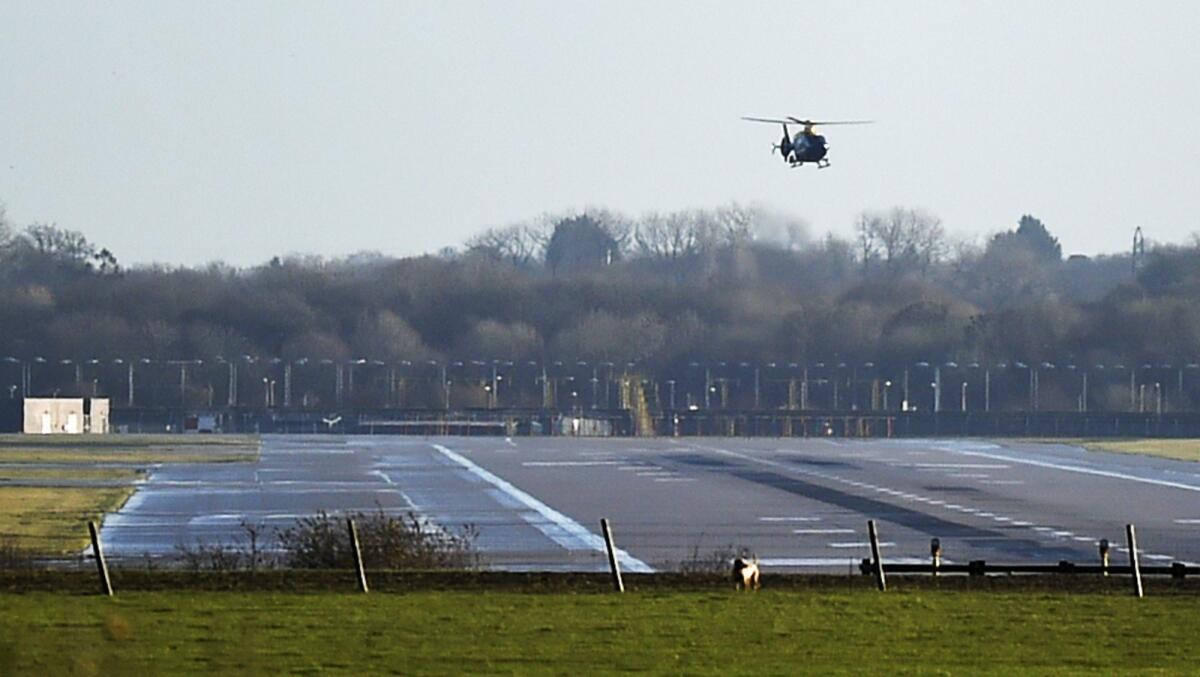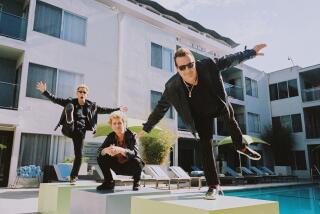Gatwick Airport incident shows the threat of rogue drones in commercial airspace

Two rogue drones buzzing the runway at Londonâs Gatwick Airport froze hundreds of incoming and outgoing flights during the busy holiday season on Thursday, prompting an intense search for the dronesâ operator and serving as a dramatic example of a potential threat to commercial airspace.
The incident at Britainâs second-busiest airport â which threatened to drag on into Friday â shows why regulators and drone industry experts fear a collision at high speeds could cause significant structural damage to a jet, or even engine failure.
Last year, pilots reported 385 near mid-air collisions in the U.S., defined as a âcollision hazardâ between two or more aircraft or when an aircraft flies within 500 feet of another aircraft, according to a report released this month by the Federal Aviation Administration. Near mid-air collisions with drones ânow account for more than half of reported events,â the FAA said. In 2016, pilots reported 304 near mid-air collisions, with a similar ratio of drone incidents.
More recently, Mexican airline AeroMexico is looking into whether a drone collided with one of its Boeing 737 planes last week as it approached Tijuana.
Two Gatwick drones were first sighted Wednesday night, leading airport officials to close the runway. It briefly reopened early Thursday morning, only to close again 45 minutes later after additional sightings. As of Thursday afternoon, 216 outbound flights had been canceled, as well as 220 flights that were bound for the airport, according to flight-tracking website FlightAware.
Military and police responded to the scene. Law enforcement told airport officials it was too risky to try to shoot down the drones, the Associated Press reported. On Twitter Thursday, the Sussex police urged the public to report any known information about the drone operatorâs identity or location. The police said they were searching for the operator along with airport personnel.
No incidents comparable to the Gatwick Airport shutdown have been reported in U.S. airport airspace, an aviation official said. But drones have interfered with official operations in the past. In 2016, for example, several drones flew over the San Gabriel Complex fire in the San Gabriel Mountains, forcing firefighters to temporarily stop air operations.
The shutdown of the British airport, however, could prompt discussion in the U.S. about harsher penalties for unauthorized drone flights in restricted airspace or greater use of counter-drone or user identification technology, experts said.
âWeâve never seen anything on the scale of what happened today in Gatwick, in terms of number of flights canceled, in terms of the number of drones involved,â said Arthur Holland Michel, co-director of the Center for the Study of the Drone at Bard College in New York. âThis case today seems to be very clearly a deliberate, malicious act intended to disrupt Gatwickâs air traffic over a sustained period.â
U.S. airports are not allowed to use counter-drone technology, which can include signal-jamming systems designed to interrupt the radio frequencies that link a drone to its controller. Only the Defense Department, Department of Energy, Department of Homeland Security and Department of Justice have congressional authority to use counter-drone technology, an aviation official said.
U.S. airports are allowed to use drone-detection technology, including infrared or radio frequency systems, with some restrictions, according to Homeland Security.
Jamming technology was credited with foiling an assassination attempt on Venezuelan President Nicolas Maduro in August, when two drones laden with explosives flew toward him at an event. One of the drones crashed into the side of a building, while the other exploded over uniformed guardsmen and caused injuries.
But jamming can be less effective when drones fly out of sight, and it could interfere with legitimate communications in the area, Holland Michel said.
Other defensive measures such as spoofing, which allow an operator to take over control of a rogue drone, or options like shooting a net or a laser at a drone, can be unpredictable.
âThereâs no solution thatâs 100% effective and appropriate in 100% of cases,â Holland Michel said. âThatâs the real challenge. Itâs a cat-and-mouse game.â
Los Angeles International Airport does not use drone-detection systems. It relies on visual sightings and reporting from the air traffic control tower and pilots, said Officer Rob Pedregon, public information officer for airport police at LAX.
A technology known as geofencing has worked out âreally wellâ for the airport, he said. This GPS-based software can be embedded in drones and once the aircraft hits a âvirtual boundary,â such as a wildfire or an airport, the software overrides the controller to force the drone to hover in place.
Drone manufacturer DJI has a geofence system installed in its products to prevent âinadvertentâ drone operations in sensitive areas.
In the future, remote identification technology could be used to pinpoint a droneâs operator, similar to a virtual license plate, said Lisa Ellman, partner at law firm Hogan Lovells and co-executive director of the Commercial Drone Alliance advocacy group.
âThe idea is to install some basic rules of the road for all [unmanned aerial systems] operators in the national airspace,â she said. âWe really need the policies to catch up to the technology,â she said.
The Associated Press was used in compiling this report.
Twitter: @smasunaga
More to Read
Inside the business of entertainment
The Wide Shot brings you news, analysis and insights on everything from streaming wars to production â and what it all means for the future.
You may occasionally receive promotional content from the Los Angeles Times.











